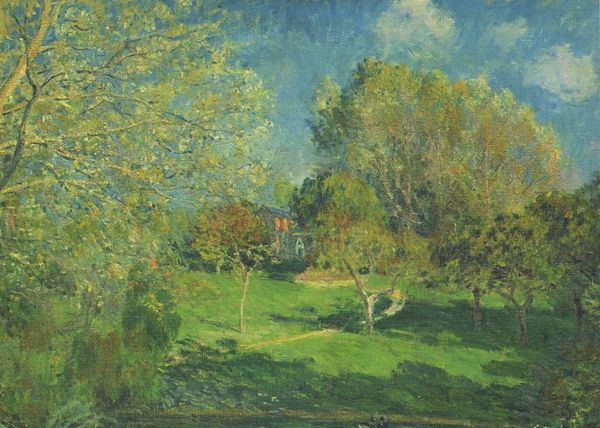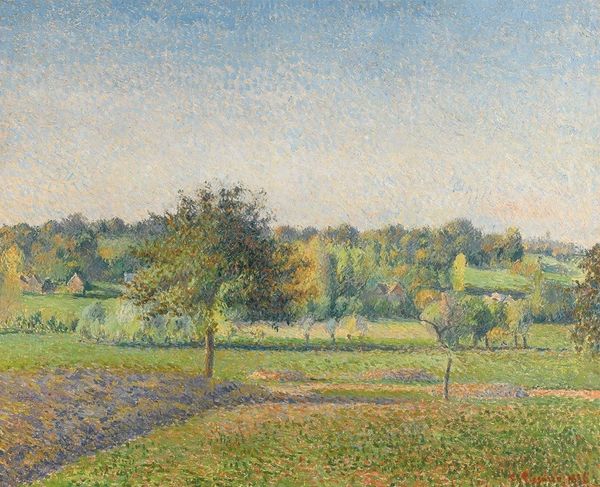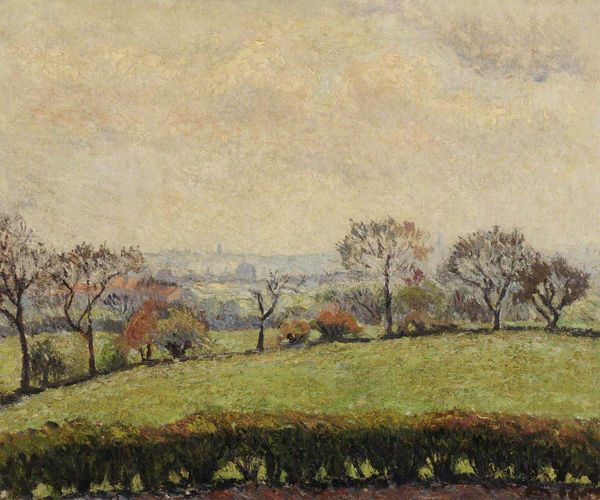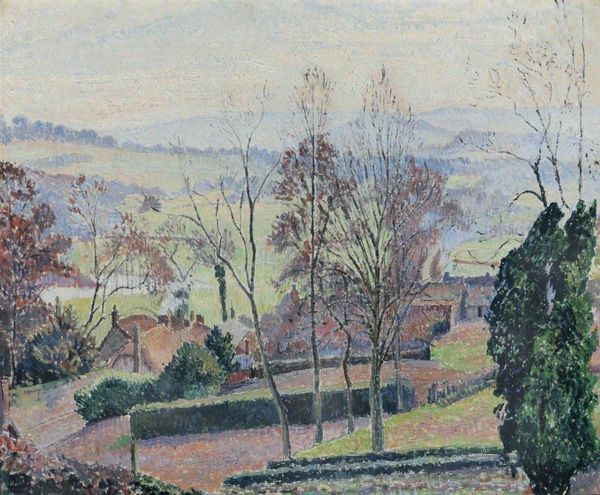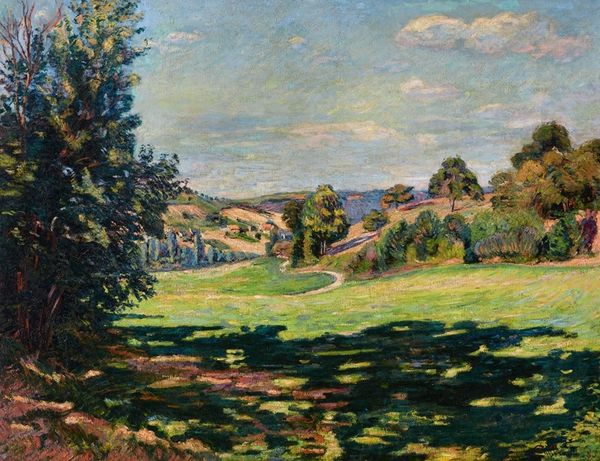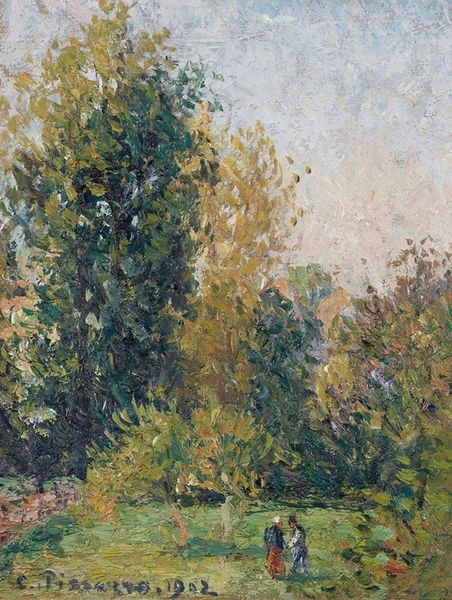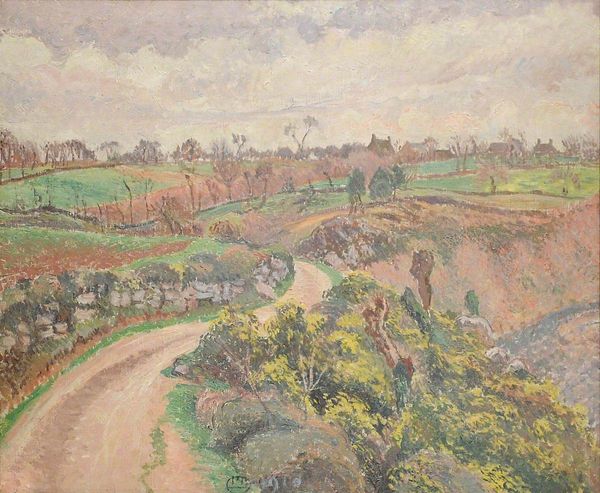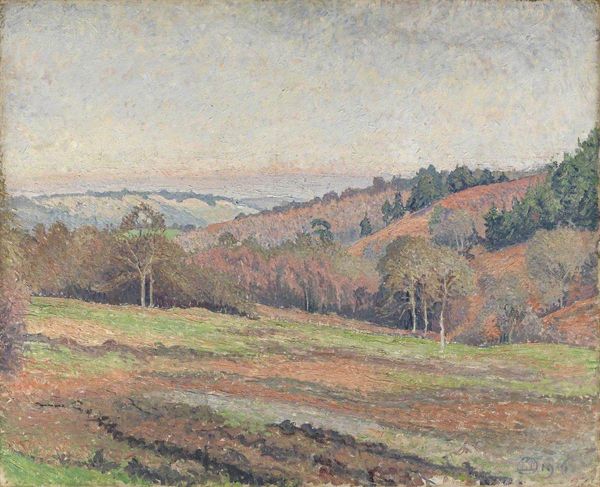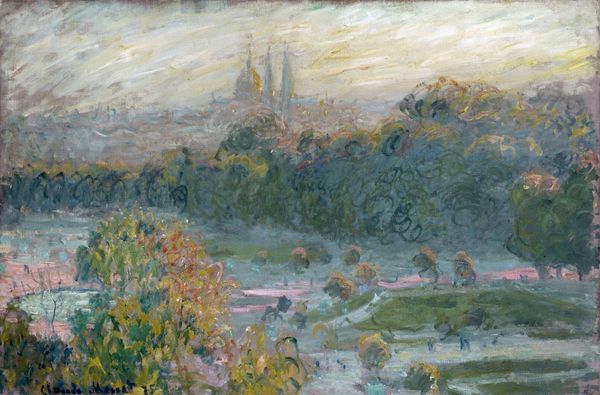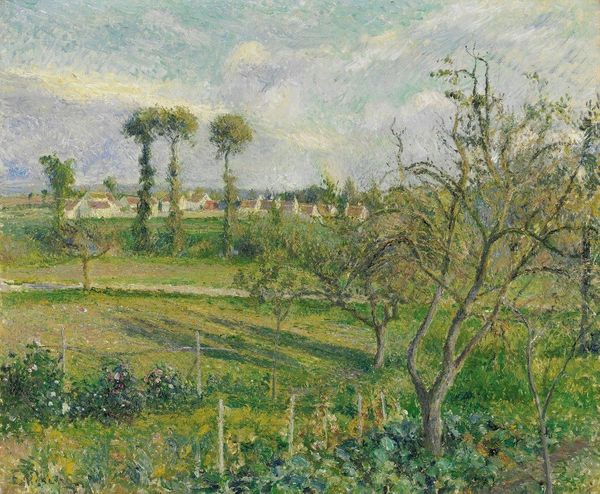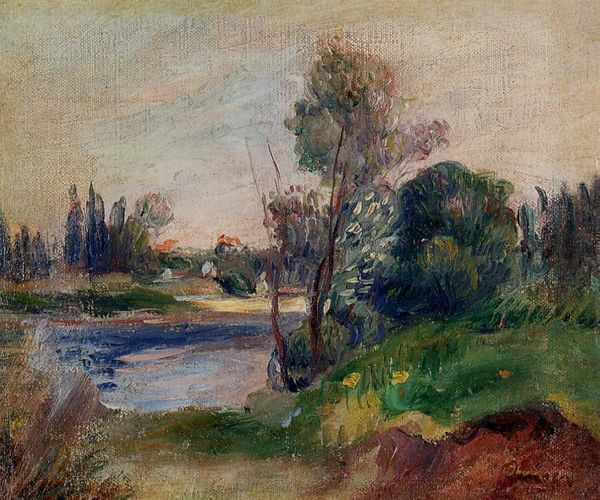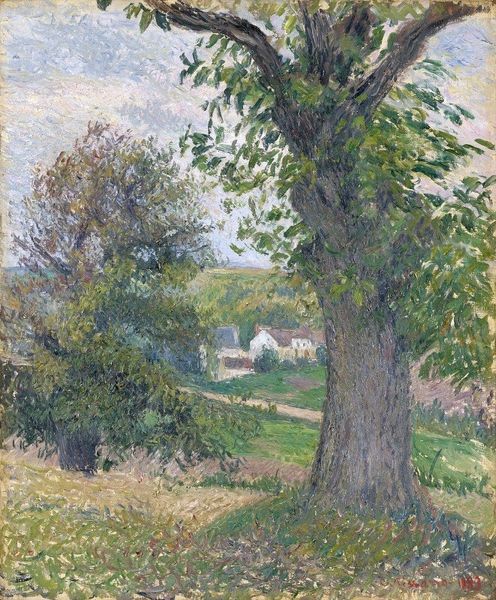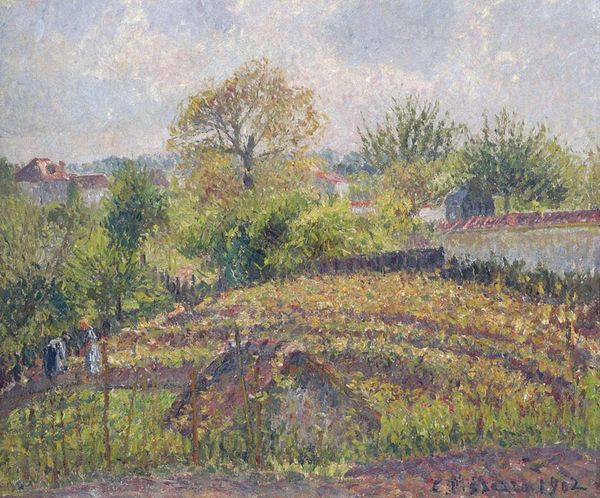
Copyright: Public domain
Editor: We are looking at Lucien Pissarro's "Above the Village, Hewood," an oil painting from 1941. The textures feel soft, and there’s this dreamy quality to the whole scene, especially the way the light hits the trees. What strikes you most about this piece? Curator: I'm drawn to how Pissarro positions this seemingly idyllic landscape within the context of 1941. The Second World War was raging. Consider the tension between the artistic desire to capture beauty, and the sociopolitical realities that were impossible to ignore. Editor: So, it’s not just a peaceful landscape painting? Curator: Not entirely. Think about who had the privilege to escape into nature, to paint, while others faced immense hardship. Who does this vision of pastoral England serve? Was it perhaps a subtle commentary or a form of resistance through beauty, accessible only to some? The muted tones can also be interpreted through this historical lens. Editor: I see your point. Maybe it's not so simple as just painting pretty trees. How can we look critically at even seemingly harmless art? Curator: Exactly. What narratives are being highlighted and what voices remain silent? By engaging in this critical questioning, we invite a more inclusive and meaningful dialogue with art, even landscapes. Editor: That makes me rethink the whole perspective of landscape art. I'll never look at one the same way again! Curator: That is the intention, questioning aesthetics in order to think more deeply.
Comments
No comments
Be the first to comment and join the conversation on the ultimate creative platform.
